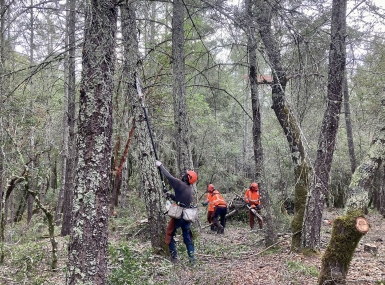Tattoos help public safety officials identify bodies
Upcoming Events
Related News

In early spring of 2016, a body was discovered in the Kankakee River by a fisherman.
When law enforcement officers from the Kankakee County, Ill. Sheriff’s Office arrived on the scene, they removed the body from the water to begin their initial attempt at identification.
At that time, all officers could determine was that the body was that of a badly decomposed white male who had been in the water up to 10 days. Because of this level of decomposition, officers were unable to get fingerprints for identification, which made the identification process even more challenging.
Using this basic information, authorities searched through a national missing person’s database in an attempt to identify the man, but found no matching results.
Looking for answers
According to Robert Gessner, the Kankakee County coroner, when the body was brought into the morgue, it was discovered that the body was actually that of a black male and not a white male as officers originally thought. This generated more questions regarding the identity of the body.
“Whenever we have an unidentified body we immediately begin to think of questions regarding how and why the person died,” Gessner said. “In this case, we wanted to know where he was from, why he was unclothed and what had he been doing prior to ending up in the river.”
During examination, Gessner discovered a rose tattoo on the man’s neck. Using that information, he contacted Sgt. Trent Bukowski, IT director for the Kankakee County Sheriff’s Office, and had him search through his public safety software database to see if any records matched this information. Within minutes, Bukowski had a match.
Using the scars, marks and tattoos module inside the corrections system, Bukowski generated a list of 68 current and former inmates who had neck tattoos. Based on the location of the tattoo on the unidentified man’s body, the list of possible matches was brought down to eight. By examining the photos of these eight individuals with neck tattoos, investigators were able to match the unidentified man’s tattoo to his booking photo found in the corrections system.
With this information, a positive identification was made and the deceased man’s family was contacted.
A positive match
Gessner said without the information in the corrections software that was used to search for the rose tattoo, identifying the body could have taken up to nine months. In situations where a body cannot be identified, programs are used to search nationwide databases such as Forensic Filer and TLOxp Transunion in hopes of finding a hit. This is not only costly, but can take months and doesn’t always lead to a positive identification.
“There’s no way we would have found out who this man was without our public safety software,” Gessner said.
Drowning was the official cause of death for the man found in the river, and drugs were also found in his system. It is still unknown as to how the man entered the river.
Tattoo leads to identification
Later that same year, officials with the Kankakee County Sheriff’s Office also used their public safety software to identify a body found in a tent.
In this incident, a man was found alone in a tent with no identification. The only thing with him was a newspaper, which helped determine how long the man had been deceased based on the date on the newspaper.
Like the body found in the river, law enforcement officers throughout the county were made aware of the unidentified body that was found. However, no one had any reports of an individual missing who matched the man’s description.
A breakthrough in identifying the body came once it was examined at the morgue. During this time, the coroner noted a green shamrock tattoo on the man.
Gessner made a call to the Kankakee County Sheriff’s Office to see if they had any information in their records’ system that could help identify the body. In fewer than 15 minutes, Bukowski had searched through his public safety records and corrections software and had a positive hit.
“It was the fastest we have ever been able to identify a body,” Gessner said. “It wouldn’t be possible without the records software.”
For more information on this story, contact: Sgt. Trent Bukowski, IT director Kankakee County Sheriff’s Office: 815.802.7100, tjbukowski@k3county.net
Attachments
Related News

County Countdown – April 21, 2025
Every other week, NACo's County Countdown reviews top federal policy advocacy items with an eye towards counties and the intergovernmental partnership. This week features the ARPA reporting deadline, a budget reconciliation update and more

U.S. House reintroduces legislation to address the Medicaid Inmate Exclusion Policy
Two bipartisan bills aimed at addressing the Medicaid Inmate Exclusion Policy (MIEP) were recently reintroduced in the U.S. House of Representatives.

FEMA halts disaster mitigation grant program
On April 4, the Federal Emergency Management Agency (FEMA) announced it will not allocate $750 million this year for the Building Resilient Infrastructure and Communities (BRIC) grant program. According to the press release, FEMA will also stop funding BRIC projects that were previously approved and are still underway.